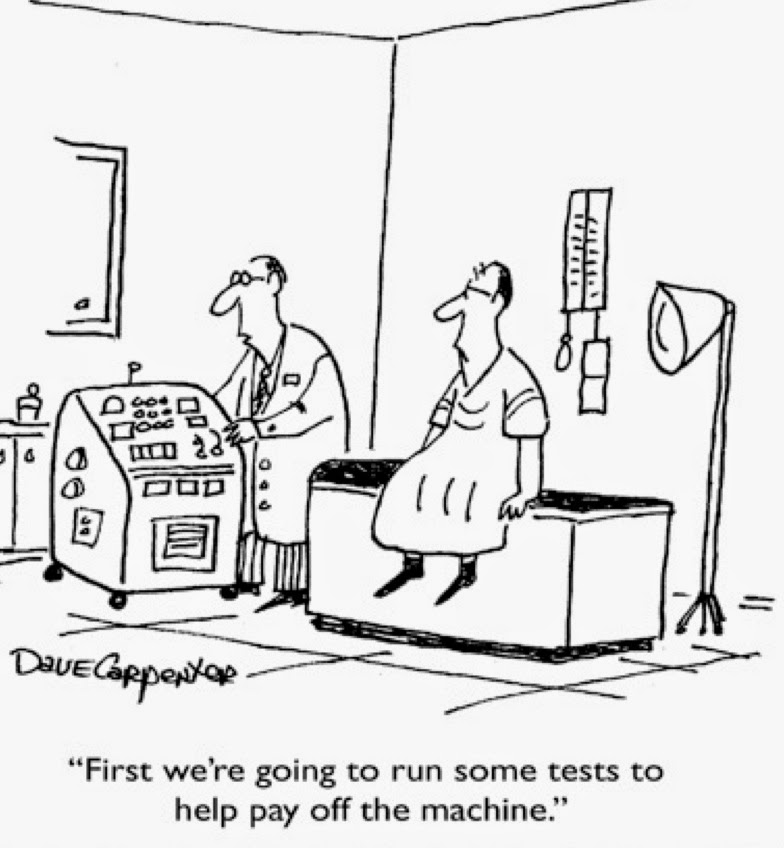

Direct Primary Care has been gaining popularity and recognition rapidly in the last decade. Many of the current DPC physicians are those who left the fee for service system because of burnout and frustration. Many residents are now also flocking to do DPC right out of residency because three years of FFS medicine is all they can handle. Medical student interest is also rising because the values of DPC align perfectly with their values of what it means to be a good physician. However, most medical students don’t have a good grasp of how the current FFS works. This is a primer for medical students (or whoever needs a refresher) on the FFS system which will foster a better appreciation of DPC and aid in explanations to others who are still stuck in FFS.
To begin, there are three fundamental principles to remember about FFS
- The fundamental relationship is one of a third party payer – patients pay their insurance companies and in turn the insurance companies pay the doctor.
- Insurance companies exists to reduce risk (ie lower their chance of having to pay out claims)
- This has somewhat changed since the passage of the ACA where insurance companies sometimes profit off spending more but that discussion is for another time
- Doctors are rational individuals who require income just like everyone else
Putting it all together, you have a system where doctors are trying to get paid to do their job by a payer whose sole purpose is to pay out as little as possible. Nowhere is this conflict more apparent than in what should be a basic financial transaction. After a patient visit, the physician will submit a bill to the insurance company which includes the service provided (ICD diagnosis code) and the payment requested (E/M or procedure code). Unlike most bills, insurance companies require detailed descriptions of the services performed to justify the charge. This is akin to high school teachers asking students to show their work on homework and tests for points; except in this case, the lunch lady is asking the AP calculus student to show their work on a math problem in order to get lunch. Since most insurance company bureaucrats never went to medical school, their idea of medical complexity justification led to the creation of a nonsensical documentation system. But since this is how doctors had any chance of getting paid, they put a lot of emphasis on making sure it’s done right regardless of what they think about it. For every encounter, doctors try to say and click the right things to maximize their payment while insurance companies try their best to find flaws and reasons to not pay or pay less. This gives rise to armies of millions of people on both sides who exist solely to either maximize payment or reduce payout.
While the back and forth between physician billers and insurance company claim deniers hums in the background, another type of chaos dominates the clinic schedule. Fee for service simply means do stuff, get paid. More stuff, more pay; less stuff, less pay. Sounds reasonable if the transaction was simple and payments were adequate. But remember, each encounter requires some personnel to ensure payment and insurance companies try to pay as little as possible. 99213s and 99214s, the most common E/M codes, pay around $90-130 depending on region and payer. Needless to say, this amount is not much to share amongst office staff and expenses. In order to keep everything afloat, the only way to maximize payment is to maximize encounters (one private practice doctor told me they have to see 11 patients a day just to keep the lights on). This is why most offices have 15 minute time slots which are often double booked. Good care often cannot happen in this time frame which is why most doctors are running an hour or two behind. Increasing patient volume creates a feedforward spiral of doom. More patients means more claims to bill and more tasks to follow up on which means more staff are needed which means more patients need to be seen to support the staff and so on. Many hospital systems swoop like vultures when private practices are in the death spiral to buy them up and use primary care offices as “loss leaders” in order to generate referrals to their more lucrative specialties; which works well when they push their physicians to see even more patients so the PCP has no choice but to refer out for things they could handle if only they had a little more time.
While insurance companies and physician offices battle and doctors have to see increasing numbers of patients just to survive, the patient suffers. They pay premiums for a product which exists to deny them care and then additionally get billed for a rushed visit by a doctor’s office which usually doesn’t even know how much most things cost. Patients should be the center of their care, instead they end up as a casualty of a perverse payment structure. DPC puts patients back in the driver’s seat of their care while untangling physicians from the complex insurance reimbursement process. Instead of jumping through pointless hoops to get paid, the physician’s focus is now on patient outcomes and satisfaction. Less hoops also means no army of coders and billers, meaning lower overhead and overall decreased costs. Furthermore, the subscription model allows for a relationship based transaction rather than an action based one. Primary care physicians thrive when able to provide quality, comprehensive care and when patients take charge of their care in a DPC relationship, the incentives align and everyone wins.